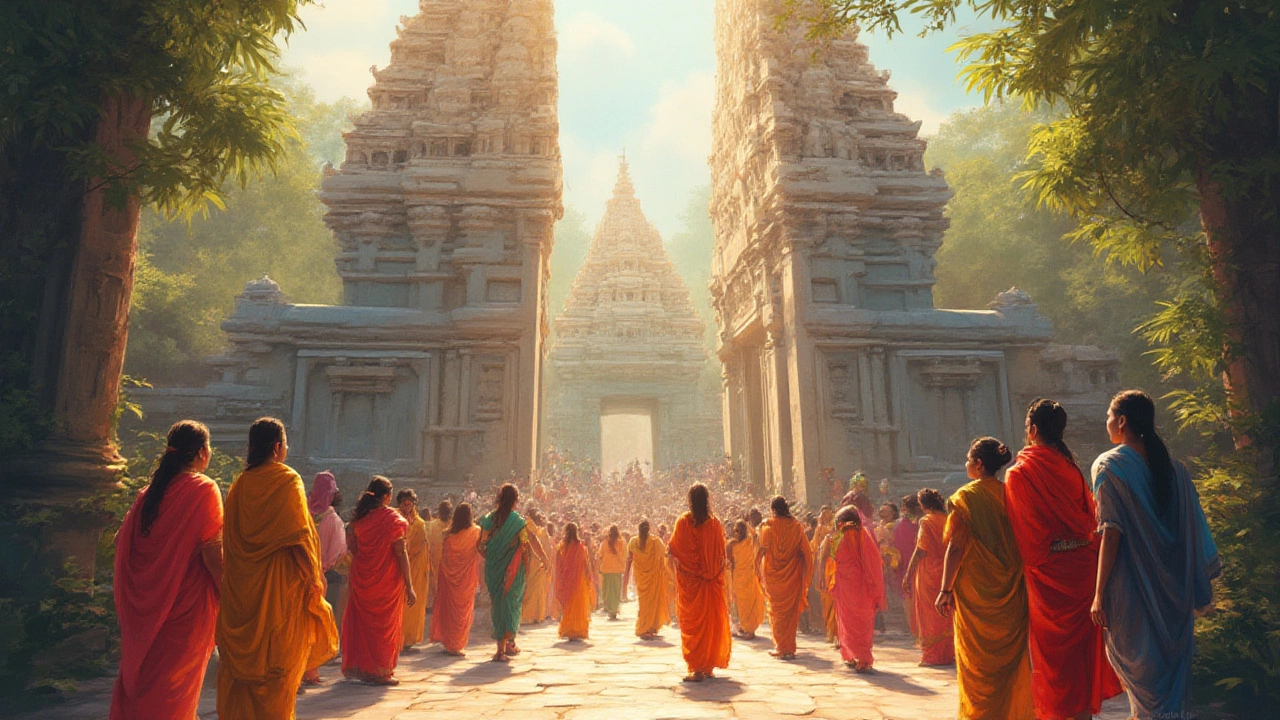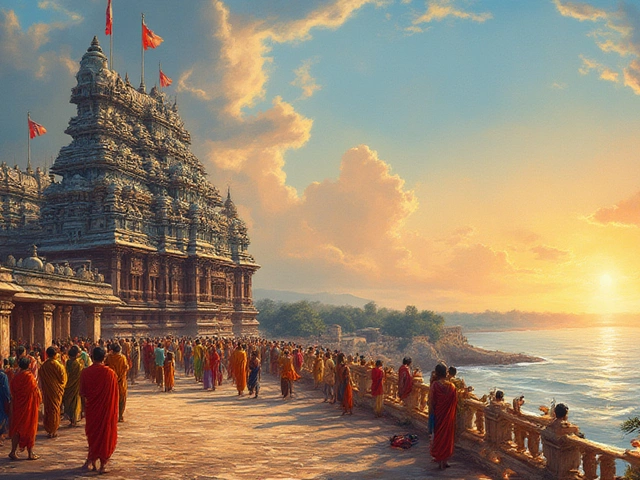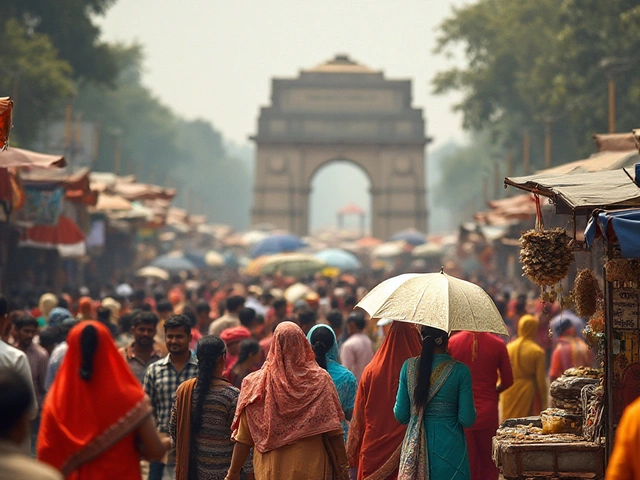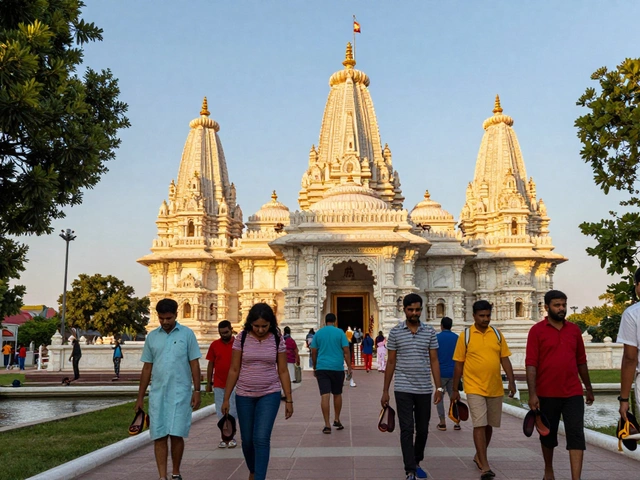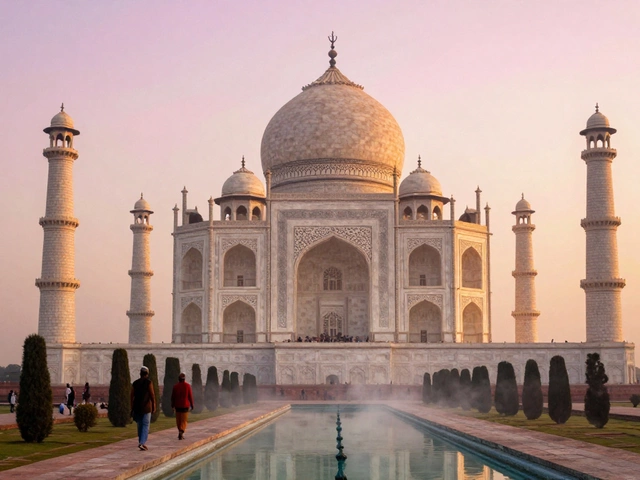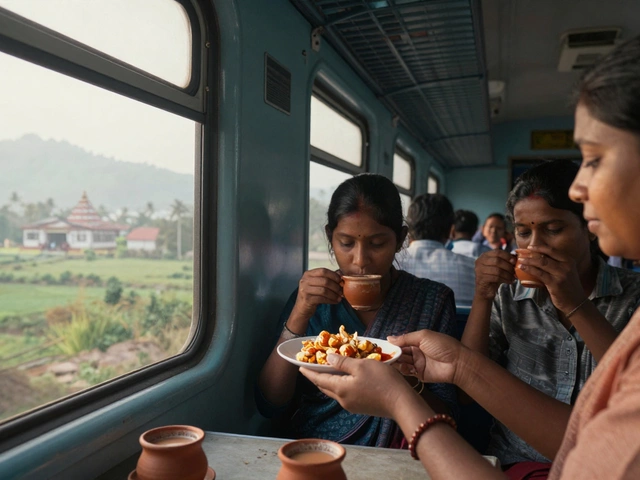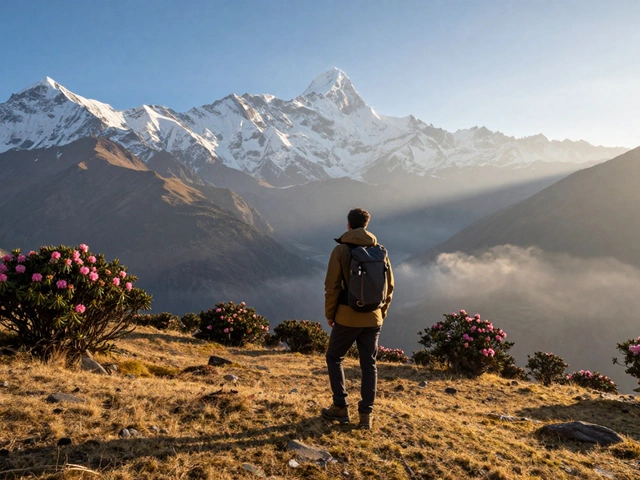The idea of a place so sacred that only women can enter it sounds almost mythical these days. Yet, in India, this isn't just legend—it's reality. Against a backdrop of temples with centuries-old rules, some open their arms only to women, flipping the script on traditional gender norms in worship. One temple stands out for this special privilege, and its story is nothing short of captivating.
Where Devotion Is Gender-Specific: The Attukal Bhagavathy Temple
Talk about breaking the mold—Attukal Bhagavathy Temple in Kerala actually invites women into its sacred realm while politely shutting the doors to male devotees during its signature festival. This has made it one of India’s most talked-about shrines and even earned it a spot in the Guinness Book of World Records. During the annual Attukal Pongala festival, millions of women descend on this temple from various corners of the country, creating what almost seems like a city made only of sisters, mothers, daughters, and grandmothers. To see so many women taking center stage—literally—is a visual you won’t soon forget. You can sense the energy miles before even entering the temple’s neighborhood.
The Attukal temple is dedicated to the goddess Bhagavathy, who many believe to be an incarnation of Kannaki, the fiery heroine of the Tamil epic Silapathikaram. Kannaki symbolizes female strength against injustice—the perfect deity for a temple for women, by women. Only female devotees are permitted to perform the main Pongala ritual, which involves cooking a sweet rice pudding in new clay pots as an offering. Think of it as the world's largest gathering where women come together to pray, cook, and celebrate sisterhood. The scale? In 2009, Guinness confirmed it was the largest congregation of women for a single religious activity, clocking in over 2.5 million people. That’s more than the entire population of some small countries, just for one day of worship!
Tips if you’re planning to witness or participate: book your trip well in advance, prepare for crowds, and get ready to embrace the chaos in the best way possible. Make sure to bring comfortable clothes and get local guidance about rituals and timings—it truly helps. And yes, Pongala is safe, but keep an eye on your jewelry, and if you can, tag along with a female friend for the full experience.
Why Exclusive Spaces for Women Still Matter
You might wonder: isn’t it unfair to exclude men? On the surface, yes, but the roots of women-only worship stem from somewhere deeper. In a country where some places are off-limits to women (think Sabarimala temple), spaces like Attukal offer a rare dial tone of agency and freedom. Women can gather, pray, share stories, and show the world that faith isn't a one-way street directed only by men. For many, attending the festival is more than a religious act—it's an act of solidarity. It’s a much-needed pause from the expectations and pressures of daily life, home, and work.
There’s also a cultural angle. In Kerala, matrilineal traditions still echo faintly in social customs, and festivals like Pongala highlight this. The massive cooking ritual isn’t just about appeasing a deity—it’s about reclaiming public spaces, celebrating the power of collective prayer, and continuing old traditions that survived through the tides of history. Plenty of research shows that such festivals offer therapeutic benefits too. According to a 2022 survey published by Kerala’s Department of Women and Child Development, 78% of women who attend say they feel more empowered and spiritually uplifted after the festival. That’s not a statistic—it's a life-changing experience for many.
What also makes a difference: in Attukal, leadership roles—from organizing the festival to managing logistics—are held by women. It’s one of the few places in Indian religious life where the baton is firmly in female hands. If you crave positive, inclusive vibes, witnessing this firsthand is worth your time.
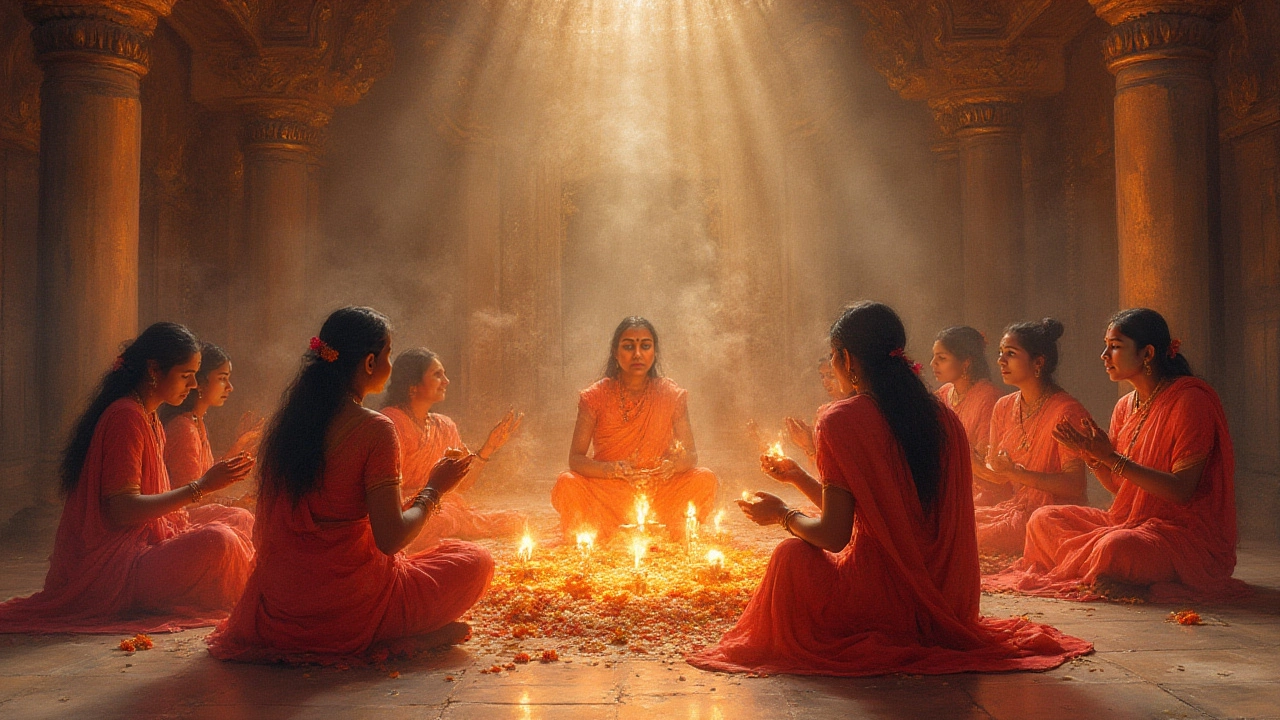
Other Temples Where Women Take the Lead
Attukal Bhagavathy Temple is the superstar, but it’s not the only place in India where women step into the spotlight. For instance, the Bhagavathi Amman temple at Kanyakumari welcomes and celebrates women, especially during certain festivals. Another unique spot is the Mata temple in Muzaffarpur, Bihar, where women flock for tailored rituals seeking blessings for fertility or marital bliss.
Also worth noting is the Kamakhya Temple in Assam. While it doesn’t outright ban men, the famous Ambubachi Mela—celebrating the menstruation of the goddess—is a period where women’s participation peaks, and the focus shifts to honoring femininity and fertility. You’ll see a similar vibe at the Mumba Devi Temple in Mumbai, where women lead important religious chants and are often given priority for darshan during some occasions.
Looking for more quirky stories? In Maharashtra, there’s the Kanyakubja Brahmin Mahila Mandal temple in Pune, run exclusively by women. And in Andhra Pradesh, the Poleramma temple in Anantapur strictly allows only women to certain sanctum rituals during specific days of the festival calendar. These aren’t as massive as Attukal, but they’re no less important for their communities. Each backs a local legend where women fought for their role not just as worshippers, but as spiritual leaders.
- The meshing of ancient myth and current reality reinforces these spaces, with stories passed from mother to daughter.
- Visiting these temples with a local woman as your guide opens up an entirely new side of the experience—she’ll explain things you’d never learn from a tour book.
The Rituals: Not Just Religion, But Empowerment
The worship at Attukal and similar temples is a blend of spirituality, tradition, and empowerment. The Pongala ritual often starts hours before dawn, with every street and lane around the temple becoming an open-air kitchen. Each woman brings her own clay pot and ingredients, starts her own little fire, and waits for the temple priest to light the main hearth. From there, a chain of flames lights up thousands of fires, symbolizing unity and shared resolve. The act of cooking isn’t just about food—it’s a symbolic way of asking for protection, peace, and prosperity for the family.
In a curious way, the Pongala ritual underlines the interlinked nature of womanhood: even if you don’t know the lady on the next mat, she becomes an instant friend. People share ingredients, swap stories of their homes, offer tips for the perfect Pongala, and sometimes just laugh together to ease nerves. First-timers often report a rush of adrenaline: it isn’t easy to light a fire on a busy street, cook in the sweltering Kerala sun, and keep up with rituals you’ve only seen on YouTube videos!
If you want to try the Pongala, arrive on the eve of the festival. Plenty of local women offer friendly advice and lend a helping hand. The ritual ends when the temple priests bless all the pots, and women collect their Pongala as a sacred gift to take home. Eat it with your family—it’s believed to bring good luck all year round.
- Don’t forget: this is a public event, so basic safety matters. Stick with the crowd, watch for instructions from volunteers, and stay hydrated. Kerala heat is no joke in February!
| Temple | Location | Main Festival | Women Participation |
|---|---|---|---|
| Attukal Bhagavathy Temple | Thiruvananthapuram, Kerala | Pongala | Women only |
| Kamakhya Temple | Guwahati, Assam | Ambubachi Mela | High, not exclusive |
| Mata Temple | Muzaffarpur, Bihar | Chhath Puja | High |
| Mumba Devi | Mumbai, Maharashtra | Navratri | Women priority |
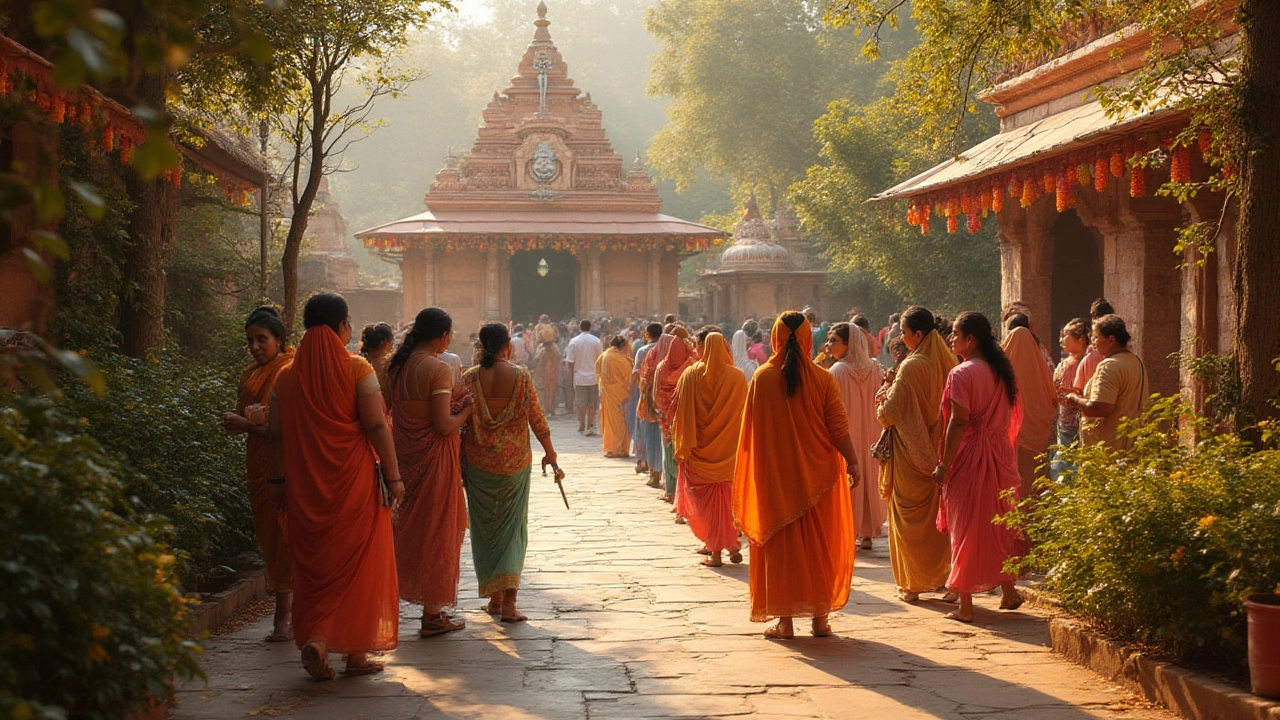
If You Want to Visit: Practical Tips and Local Customs
If this all sounds intriguing, planning your trip just takes a little groundwork. First, check the festival calendar—Attukal Pongala typically happens in February or March. The temple is open all year, but the massive crowds gather just for the festival. Signals on Google Maps and train stations in Kerala point the way, but getting a local friend to help navigate the last-mile maze on festival day is gold. Hotels book out months in advance, so secure your spot early. Most guesthouses welcome women travelers, and homestays ramp up for the festival crowd.
Wear comfortable, modest clothes—cotton sarees or salwar kameez for women work best, especially when you’ll be around fire and ash. Carry water, wet wipes, sunblock, and a scarf or umbrella. Leave expensive gadgets and jewelry at your stay, as the temple grounds are packed, and pickpockets are experts at blending into the festive crowd.
An interesting point: women of all ages and backgrounds are welcomed. The temple encourages inclusivity, and you’ll see grandmothers, teens, and mothers with toddlers all participating side by side. Even if you’re a tourist, you won’t be treated as an outsider. The festival brings together a melting pot of languages—Malayalam, Tamil, Hindi, English—so you’ll always find someone to communicate with.
Photography is typically allowed outside, but respect private moments during prayers. Always ask before you snap a close-up, especially during emotional moments. Social media is full of pictures from Pongala, but being present is just as rewarding as capturing that perfect shot. If you pick up a new recipe or ritual trick, write it down—these are treasured memories to take home.
For many women, participating is not just about faith, but about forging a community. If you listen closely, you’ll hear first-timers swapping phone numbers or making plans to meet next year. And if you’re a solo traveler, you’ll likely end up as part of a new group by day’s end—hospitality here flows as freely as the temple’s blessings.
